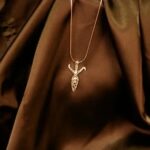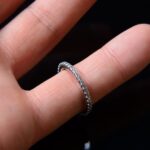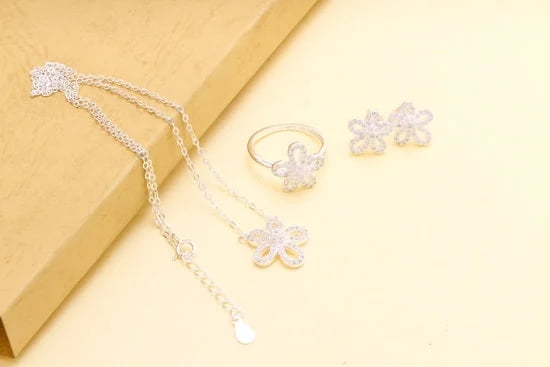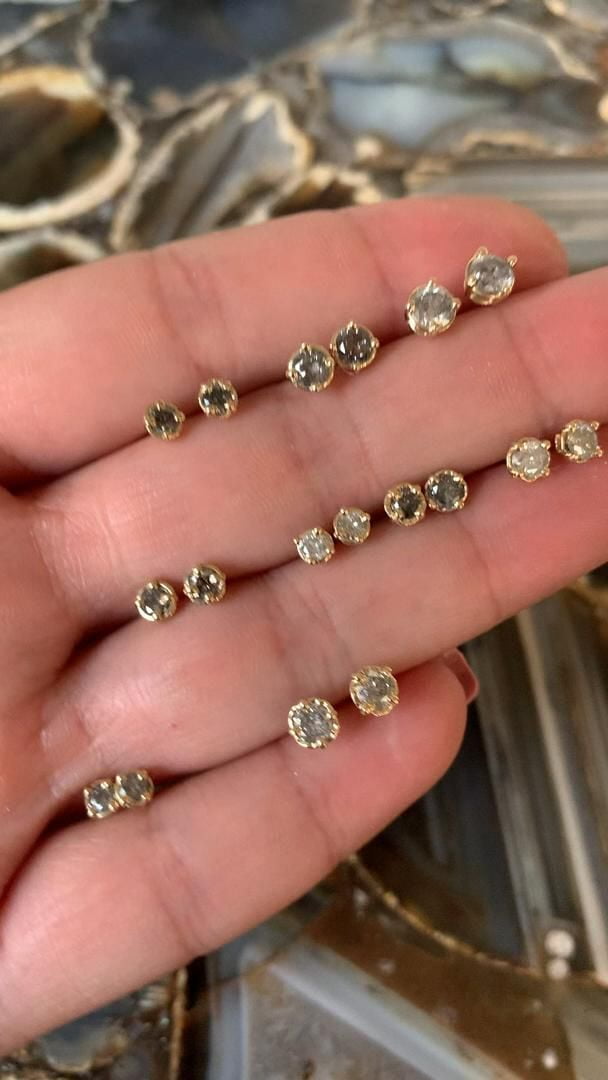The diamond jewelry industry is a realm of mystique and allure that has captivated consumers for centuries. With its shining gemstones and intricate designs, diamond jewelry holds a special place in the hearts of many. However, amidst all the beauty lies a lingering curiosity about the markup on these exquisite pieces.
Just how much value is added to the price tag? In this article, we will delve into the world of diamond jewelry markup and uncover the factors that contribute to it.
Diamond jewelry has experienced remarkable growth over the years, becoming an essential segment of the global jewelry market. The demand for diamond jewelry continues to rise, making it a highly lucrative industry. However, as consumers become more discerning and educated about their purchases, questions arise about the pricing structure and the markups applied by retailers.
Various factors come into play when determining the markup on diamond jewelry. Quality is one crucial aspect that significantly impacts price. The better the quality and rarity of a diamond, the higher its price tag will be. Additionally, brand name also plays a significant role in determining markups. Established brands often price their pieces higher due to their reputation and recognition in the market. Moreover, market demand can drive up prices as well.
Intrigued by these dynamics, we will unravel the intricacies of diamond pricing and delve into its components – commonly referred to as the 4Cs: Cut, Color, Clarity, and Carat weight. Each of these factors contributes to both the final price and markup on diamond jewelry. By understanding these aspects in detail, readers can gain insights into why certain diamonds are priced higher than others.
To satisfy your curiosity further, we have gathered valuable insights from experts within the diamond jewelry industry who shed light on why markups exist and how they are justified from an industry perspective. Through comparing retail and wholesale markups and debunking common misconceptions surrounding this topic, readers will gain a comprehensive view of this intriguing facet of the jewelry market.
Whether you are a seasoned diamond jewelry enthusiast or a first-time buyer, our aim is to empower you with the knowledge needed to make informed decisions and navigate the diamond jewelry market more effectively. With our tips for smart diamond jewelry buyers, you will be equipped to maximize the value of your purchases while avoiding excessive markups. So let’s embark on this journey together, and uncover the truth behind the markup on diamond jewelry.
The Diamond Jewelry Market
The diamond jewelry market has experienced significant growth and holds great significance worldwide. This section delves into the reasons behind this growth and highlights the importance of the diamond jewelry industry in various economies.
The global diamond jewelry market has witnessed consistent growth over the years, with a projected value of $91.9 billion by 2025. One of the main drivers of this growth is the increasing consumer demand for luxury goods and high-end jewelry.
As disposable incomes rise, more people are willing to invest in diamond jewelry as a symbol of status and wealth. In addition, changing cultural attitudes towards diamonds, particularly in emerging markets like China and India, have fueled demand further.
Furthermore, diamonds hold a special place in many cultural traditions, making diamond jewelry an integral part of celebrations such as engagements, weddings, and anniversaries. This emotional connection to diamonds contributes to their popularity and ensures a consistent demand for diamond jewelry.
| Growth Factors | Market Significance |
|---|---|
| Rising consumer demand for luxury goods | Projected value of $91.9 billion by 2025 |
| Changing cultural attitudes towards diamonds | Influential in emerging markets like China and India |
| Emotional connection to diamonds | Diamonds are integral to celebrations and milestones |
To meet this growing global demand, countries such as Russia, Australia, Canada, and Botswana have become key players in diamond production. These countries have rich diamond deposits and robust mining industries that contribute significantly to the overall supply of rough diamonds used in the production of diamond jewelry.
The diamond jewelry market also plays a crucial role in various local and national economies. For instance, in countries like India and Belgium, the diamond industry provides employment opportunities, generates revenue through exports, and contributes to economic growth. The industry’s significance is further evident in places like Antwerp, Belgium, which is widely regarded as the world’s diamond capital.
Factors Affecting Diamond Jewelry Markup
When it comes to understanding the markup on diamond jewelry, it is essential to consider the numerous factors that contribute to the final price of a piece. These factors play a significant role in determining the markup percentage applied by retailers. Some of the key factors influencing diamond jewelry markup are diamond quality, brand name, and market demand.
Diamond Quality:
The quality of a diamond is one of the primary factors affecting its price and markup. Diamond grading is commonly based on the 4Cs: Cut, Color, Clarity, and Carat. Each of these characteristics has a significant impact on a diamond’s overall value.
- Cut: The cut refers to how well a diamond has been shaped and faceted. It determines its brilliance and sparkle. Diamonds with excellent cuts are highly sought after and typically command higher prices.
- Color: Diamonds range from colorless to various shades of yellow or brown. The less color a diamond exhibits, the higher its value.
- Clarity: Clarity refers to the presence or absence of internal flaws or external blemishes in a diamond. Diamonds with fewer inclusions or blemishes are considered more valuable.
- Carat: Carat weight is often one of the first things people consider when determining a diamond’s value. As carat weight increases, so does its rarity and price.
Brand Name:
The brand name associated with a piece of diamond jewelry can significantly impact its price point and markup. Well-established luxury brands often command higher prices due to their reputation for quality craftsmanship, heritage, and exclusivity. Consumers willingly pay premium prices for these branded pieces as they are seen as symbols of status and refinement.
Market Demand:
Supply and demand dynamics have a profound impact on the pricing and markup of diamond jewelry. If there is high consumer demand for a particular style, design, or brand, retailers can capitalize on this by increasing the price and subsequently the markup. On the other hand, if demand decreases, retailers may need to offer discounts or reduce markups to stimulate sales.
Understanding these factors that affect diamond jewelry markup is crucial for consumers looking to make informed purchasing decisions. By knowing what contributes to a diamond’s value and price point, buyers can evaluate whether they are getting a fair deal and ensure that they are paying an appropriate markup for their desired piece of diamond jewelry.
Understanding Diamond Pricing
Diamond pricing is a complex and intricate process that involves several factors, the most important being the 4Cs: Cut, Color, Clarity, and Carat. Understanding how these factors contribute to the final price and markup of diamond jewelry is essential for buyers who want to make informed decisions.
The cut of a diamond refers to how well it has been shaped and faceted. The better the cut, the more brilliance and sparkle the diamond exhibits. A well-cut diamond will demand a higher price and markup due to its superior light performance. In contrast, diamonds with lower cut grades will have lower prices and markups.
Color is another crucial factor in determining the value of a diamond. The Gemological Institute of America (GIA) grades diamond color on a scale from D (colorless) to Z (light yellow or brown). Diamonds in the D-F range are considered more valuable because they appear colorless, whereas those in the G-I range may show slight traces of yellow or brown. As a result, diamonds with higher color grades will have higher prices and markups.
Clarity assesses the presence of internal or external flaws within a diamond. The fewer blemishes a stone has, the higher its clarity grade. The GIA uses an international grading scale from Flawless (no imperfections visible under 10x magnification) to Included (imperfections visible to the naked eye). Generally, diamonds with better clarity grades command higher prices and markups.
Carat weight is perhaps one of the most well-known aspects of diamond pricing. Carat refers to the size or weight of a diamond, with larger stones having greater value due to their rarity. Each carat is divided into 100 points; therefore, even small differences in carat weight can significantly impact pricing and markups.
Understanding these four key factors in diamond pricing allows consumers to evaluate their preferences and budget constraints when making purchasing decisions. While all four Cs contribute to the final price and markup, the importance of each factor varies depending on personal preferences and priorities. By understanding how these components interact, buyers can make more informed choices and ensure they are getting the best value for their money.
| Factor | Description |
|---|---|
| Cut | Refers to the shape and faceting of a diamond; affects its brilliance and sparkle. |
| Color | Refers to the presence of color in a diamond; graded from D (colorless) to Z (visible yellow or brown). |
| Clarity | Refers to the presence of internal or external flaws in a diamond; graded from Flawless (no imperfections visible under magnification) to Included (imperfections visible to the naked eye). |
| Carat | Refers to the size or weight of a diamond; larger stones are rarer and thus more valuable. |
Industry Insider Insights
Expert Opinion on Markup Practices
To get a better understanding of the markup practices in the diamond jewelry industry and their justifications, we reached out to experts within the field. These insiders shed light on how pricing is determined and why markups may vary.
One expert, Jane Johnson, a certified gemologist with over 20 years of experience in the industry, explained that markups are necessary for jewelers to cover various costs associated with operating a business. These costs include rent, employee salaries, utilities, insurance, and other overhead expenses. Additionally, she emphasized that reputable diamond jewelers often provide added value through customer service, warranties, and guarantees which further contribute to the markup.
Another insider, John Thompson, a jewelry retailer for high-end luxury brands shared his perspective on brand name influence over pricing. He mentioned that well-known luxury brands often command higher markups due to their reputation for quality and iconic status. However, he also highlighted that smaller boutique jewelers may offer competitively priced pieces with comparable quality as they have lower overhead costs compared to larger brands.
The Role of Exclusivity and Rarity
When it comes to justifying higher markups in diamond jewelry pricing, experts pointed out that rarity plays a significant role. Rare or unique diamonds can command much higher prices due to their exclusivity. A one-of-a-kind diamond or an exceptionally rare color or size may naturally have a higher markup because of its scarcity in the market.
However, it’s important for consumers not to confuse rarity with excessive price inflation. Experts unanimously agreed that transparency is key when it comes to buying diamond jewelry. Consumers should seek reputable jewelers who are willing to share detailed information about a diamond’s characteristics and provide certifications from independent labs.
Factors Influencing Wholesale Markups
Regarding wholesale markups, experts revealed that these prices are typically lower compared to retail markups. Wholesale jewelers often offer their products to retailers at a reduced price, allowing retailers to add their own margin when selling the diamond jewelry to consumers. However, the specific markup percentage can vary depending on several factors.
One key factor is the supply and demand dynamics of the jewelry market. If a particular diamond cut or color becomes highly sought after, wholesalers may increase their markups due to increased demand. On the other hand, if there is a surplus of certain diamonds in the market, wholesalers may reduce their markups to encourage sales.
Another factor influencing wholesale markups is the quality and reputation of the supplier. Established and reputable wholesale suppliers with a track record of providing high-quality diamonds may command slightly higher prices compared to newer or less renowned suppliers.
Comparing Retail and Wholesale Markup
In the world of diamond jewelry, there is often a significant difference between the prices at which diamonds are sold to wholesalers and the prices at which they are sold to consumers. This variance in pricing is due to the markup applied by retailers, which covers various costs and allows for profit. Understanding the disparity in markup between retail and wholesale pricing can provide valuable insight into the dynamics of the diamond jewelry market.
At its core, wholesale pricing refers to the cost at which diamonds are sold from manufacturers or distributors to retailers. This price typically includes factors such as production costs, transportation fees, overhead expenses, and a reasonable margin of profit for wholesalers.
On the other hand, retail pricing refers to the price at which consumers purchase diamond jewelry from authorized sellers or retailers. The markup applied by retailers takes into account additional costs involved in operating physical stores, marketing efforts, staff salaries, rent, utilities, insurance, and other expenses associated with running a business.
To justify their higher margins compared to wholesale prices, retailers often emphasize the added value they provide to customers. They offer personalized services such as expert assistance in selecting the perfect diamond piece based on individual preferences and budgets.
Retailers also invest in creating a curated collection of diamond jewelry that caters specifically to their target market’s tastes and demands. In addition, they bear responsibilities such as after-sales service guarantees, warranties, certifications for authenticity purposes, appraisal services, and proper maintenance advice-all factors that contribute to higher retail prices.
Retailers must also factor in supply chain complexities when determining their markup on diamond jewelry. Unlike wholesalers who sell large quantities of diamonds at once, retailers often have more limited inventory due to space constraints in their stores. This means that they need to ensure their markup accounts not only for immediate sales but also considers slower inventory turnover rates or potential carrying costs for unsold stock.
Common Misconceptions about Diamond Jewelry Markup
Diamonds are rare, so the markup must be astronomical
One of the most common misconceptions about diamond jewelry markup is that because diamonds are rare and precious stones, the markup on these pieces must be exorbitant. While it is true that diamonds are formed over billions of years under intense pressure and heat, their rarity does not necessarily translate to an astronomical markup. The cost of a diamond piece is determined by several factors, including the quality of the stone, brand name, and market demand.
Markup is arbitrary and solely based on retailer profit
Another misconception is that the markup on diamond jewelry is arbitrary and solely designed to maximize retailer profit. While retailers do aim to make a profit, the pricing of diamond jewelry goes beyond just profitability. Factors such as operating costs (rent, staff wages, overhead expenses) play a significant role in determining the final retail price.
Additionally, jewelers invest in training their staff, offering customer service support, maintaining a physical store or e-commerce platform, and promoting their brand. All these factors contribute to the overall pricing structure.
The larger the diamond, the higher the markup
Many people believe that larger diamonds inherently have higher markups compared to smaller ones due to their perceived value. However, this assumption is not entirely accurate. Although larger diamonds tend to have higher prices due to their rarity and desirability, the percentage markup relative to their cost may not differ significantly from smaller stones.
Diamond pricing relies heavily on factors such as cut quality, color grade, clarity grade, and carat weight. So while larger diamonds may have higher absolute markups in terms of dollar value, it does not necessarily mean they have disproportionately larger percentage markups.
By debunking these misconceptions surrounding diamond jewelry markup practices, readers can gain a better understanding of how pricing in the industry works and make more informed decisions when purchasing diamond jewelry. It is essential to research and educate oneself about pricing factors, industry practices, and reputable jewelers to ensure that the markup on diamond jewelry aligns with market standards and represents fair value for the product.
Case Studies
One effective way to gain insight into the markup on diamond jewelry is by examining real-life case studies. These examples can shed light on the range of markups in the industry and help consumers understand what they might expect when purchasing diamond jewelry.
In one case study, a customer purchased a diamond engagement ring from a reputable jewelry store. After conducting some research and comparing prices, the customer discovered that the price he paid for the ring had a significant markup compared to similar rings available elsewhere. This shocking difference made him question the transparency of pricing in the industry. It highlighted how important it is for consumers to shop around and compare prices before making a purchase.
On the other hand, there have also been case studies where customers were pleasantly surprised by reasonable pricing on diamond jewelry. One instance involved an independent jeweler who offered an engagement ring with a lesser-known brand name but exceptional quality diamonds at lower prices compared to more well-known brands. This example demonstrated that it is possible to find good value and quality in diamond jewelry without paying exorbitant markups associated with certain brand names.
These case studies highlight the variability in pricing and markups within the diamond jewelry industry. They show that consumers need to be vigilant when making purchases and not simply rely on brand reputation or popular perception. By researching multiple sources, comparing prices, and seeking out reputable jewelers who offer value for money, buyers can make informed decisions while minimizing excessive markups on their diamond jewelry purchases.
Tips for Smart Diamond Jewelry Buyers
In an industry known for its high markups, navigating the diamond jewelry market can be a daunting task. However, with some practical tips in mind, buyers can empower themselves and make informed decisions to maximize the value of their purchases while avoiding excessive markups.
First and foremost, it is crucial for smart diamond jewelry buyers to educate themselves about the 4Cs: Cut, Color, Clarity, and Carat. These factors determine the quality and value of a diamond, directly impacting its price and markup. Buyers should familiarize themselves with these characteristics and understand how they interact with each other. This knowledge will enable them to assess the true value of a diamond piece and negotiate prices more effectively.
Another tip for smart buyers is to consider purchasing diamonds from reputable sources. Established jewelers who have been in the business for a long time often have established relationships with suppliers and may offer better pricing compared to lesser-known retailers. Additionally, reputable jewelers tend to have more transparent pricing practices and are more likely to provide accurate certifications for their diamonds.
Furthermore, buyers should consider alternative options when shopping for diamond jewelry. Instead of limiting themselves to traditional retail stores, exploring online platforms or even second-hand markets can yield better deals. Online retailers often have lower overhead costs than brick-and-mortar stores, allowing them to offer more competitive pricing. Second-hand markets can also be a great option as they offer unique pieces at reduced prices due to depreciation or non-brand name status.
By following these practical tips, smart diamond jewelry buyers can navigate the market with confidence while maximizing the value of their purchases. Remembering the importance of being an informed consumer is key when facing high markups in the industry. With diligence and careful consideration, buyers can find exceptional pieces without falling victim to excessive markup practices prevalent in the diamond jewelry market.
Conclusion
In conclusion, the markup on diamond jewelry is a topic that has piqued the curiosity of many consumers. Throughout this article, we have delved into various aspects of the industry and explored the factors that influence the markup on diamond jewelry. From understanding the growth and significance of the diamond jewelry market worldwide to unraveling the components of diamond pricing, we have gained valuable insights into this intricate world.
One important takeaway from our exploration is the significance of being an informed consumer when it comes to purchasing diamond jewelry. Understanding the 4Cs and how they contribute to pricing can help buyers make educated decisions and ensure they are getting what they pay for. It is also crucial for consumers to be aware of common misconceptions surrounding diamond jewelry markup and industry practices.
Moreover, our examination of retail and wholesale markups has shed light on the difference in pricing strategies employed by different players in this industry. By comparing these two types of markups, readers can gain a better understanding of how retailers justify their margins.
Ultimately, when it comes to purchasing diamond jewelry, being an informed consumer is key. By arming ourselves with knowledge about diamonds and their pricing factors, we can maximize the value of our purchases while avoiding excessive markups. The case studies shared in this blog post have provided real-life examples that highlight both shocking markups and surprisingly reasonable pricing. These stories showcase different scenarios in which consumers can make more thoughtful decisions based on accurate information.
Frequently Asked Questions
What is the average markup on diamonds?
The average markup on diamonds can vary depending on various factors such as the retailer, the quality and size of the diamond, and market conditions. However, in general, it is common for the average markup on diamonds to range from 50% to 100%.
This means that jewelers often sell diamonds for double or even triple their wholesale price. The high markup is partly due to the rarity and desirability of diamonds, as well as the costs involved in running a jewelry business.
What is the profit margin on diamond jewelry?
The profit margin on diamond jewelry also varies among jewelers and depends on several factors. A typical profit margin in the jewelry industry can range from 25% to 50%.
However, it’s important to note that this figure represents the percentage of profit made after deducting all expenses related to running a jewelry business, including overhead costs like rent, salaries, marketing expenses, etc. So while the profit margin may seem substantial at first glance, it’s essential to consider all costs associated with selling diamond jewelry.
How much do jewelers mark up jewelry?
Jewelers mark up jewelry based on several factors including wholesale costs, operating expenses, desired profit margins, and market demand. On average, jewelers tend to mark up their jewelry by around 100% or double its wholesale price. This markup helps cover expenses such as rent for physical stores or online platforms, staff salaries and benefits, marketing efforts, insurance coverage for valuable inventory, and other operational costs.
It also provides room for profit generation for jewelers who take significant risks by investing capital in purchasing inventories that may not have guaranteed sales. Ultimately, each jeweler determines their own markup strategy based on their unique business model and competitive positioning within the market.

Welcome to my jewelry blog! My name is Sarah and I am the owner of this blog.
I love making jewelry and sharing my creations with others.
So whether you’re someone who loves wearing jewelry yourself or simply enjoys learning about it, be sure to check out my blog for insightful posts on everything related to this exciting topic!





